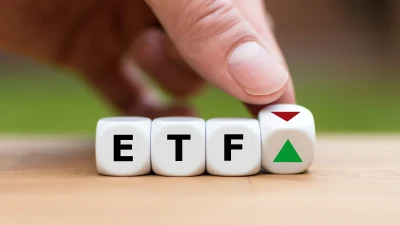High-flying funds slammed with low ratings



The list of funds receiving one and two FE Crowns was littered with big names, with managers such as Magellan, Schroders, AMP Capital, Macquarie and BlackRock having trusts receiving the bottom honours.
Fifty per cent of rated funds receive either one or two Crowns, generally indicating that they performed poorly in either performance against a benchmark, risk or stockpicking.
As table one shows, multiple funds with significant amounts of funds under management (FUM) received often surprisingly low ratings.
Table one: Funds with over $2 billion FUM and one or two Crowns
|
Fund |
FE Crown Rating |
Fund size at 31 Jan ($million) |
|
Magellan Global |
2 |
9,656.6 |
|
Schroder Real Return CPI Plus 5% |
2 |
6,821.1 |
|
Kapstream Wholesale Absolute Return Income |
2 |
6,336.7 |
|
Janus Henderson Tactical Income |
2 |
2,758.2 |
|
Schroder Global Core |
2 |
2,749.6 |
|
AMP Future Directions Australian Bond |
2 |
2,669.1 |
|
Advance Balanced Multi Blend |
2 |
2,603.8 |
|
Russell Global Bond |
1 |
2,350.0 |
|
Perpetual Wholesale Industrial |
1 |
2,192.4 |
|
Macquarie Winton Global Alpha |
1 |
2,167.5 |
|
Grant Samuel Epoch Global Equity Shareholder Yield (Unhedged) |
1 |
2,113.4 |
A consistent theme amongst the big performers in explaining their poor Crowns was that the rating system did not accurately measure various funds’ objectives in the criteria it focuses on.
AMP Capital’s Alternative Defensive, Dynamic Markets, Equity, Global Infrastructure Securities Hedged, Global Property Securities, International Bond, Specialist Diversified Fixed Income and Wholesale Cash Management funds, for example, all received just one Crown.
When asked for an explanation, an AMP spokesperson said that each fund was measured against its specific client and investment objective. These may not suit the metrics against which Crown Ratings are measured.
The spokesperson pointed to the manager’s Dynamic Markets fund as an example, saying it had generated an annualised return of 8.2 per cent since its inception in 2011 and outperformed its objective.
Over the three years the Crown Ratings measure though, data from FE Analytics shows that the fund’s annualised returns were 4.25 per cent. This is below its stated objective of achieving returns of 4.5 per cent per annum.
Magellan Global’s poor fund rating, which might suggest that perhaps Hamish Douglass is not as infallible as the industry believes, was similarly put down to a lack of contextualisation of the fund’s purpose.
Magellan’s head of research relationships and key account manager, Mark Burgess, said that the quantitative nature of the Crown Ratings did not reflect that the Global fund had exceeded its objectives over the measured period.
The fund focuses on protecting capital in down markets; it has, for example, an impressive downside capture ratio of 60.3 per cent.
As such, Burgess said that Magellan imposes a risk ratio of 0.8 upon itself, meaning that the fund cannot take advantage of a strong market, as those it is compared to against the benchmark might.
Burgess said that considering this context was vital to understanding the Global fund’s performance.
“That is critical in understanding what Magellan are trying to do, and that is, we’re trying to deliver meaningful returns through the cycle but at much lower levels of real risk to preserve capital.”
“Without putting context around a quant number when we’re trying to protect people’s capital in down markets, in a three-year period where you haven’t had a down market we might look like we’re underperforming,” he said.
“Yet in actual fact, if you look at our stockpicking and returns, it’s been incredible. We’ve also done that with 15 per cent cash.”
However, when looking at the global equities sector as a whole though, 30 funds in the Global equities sector beat Magellan Global while also recording lower risk ratings.
The Global fund, at the time of writing, had an FE risk score of 102, which is based on relative volatility against the ASX 200, with the index scoring 100.
At 30, almost as many funds outperformed Magellan’s annualised returns of 8.79 per cent in the three years to February’s end with lower risk scores than those that did so with more risk (39).
While the Global fund does recommend seven to 10 years’ investment in the fund rather than three, this nonetheless begs questions as to how much being risk-adverse actually impacted the fund’s performance.
Finally, it should be noted that the big managers listed in table one were also strong representatives in the four and five-Crown categories, suggesting that though they may have had some funds struggle over the last three years, their performance as managers has not.
Recommended for you
Challenger has looked to the superannuation industry for its appointment of a group chief investment officer, a newly-created role.
Paradice Investment Management has become the latest fund manager to launch an active ETF version of its managed fund, placing greater emphasis on retail distribution.
Schroders has appointed a new chief executive as Simon Doyle steps down from the asset manager after 22 years.
Distribution of private credit funds through advised channels to retail investors will be an ASIC priority for 2026 as it releases the results of its thematic fund surveillance and guidance for research houses.












